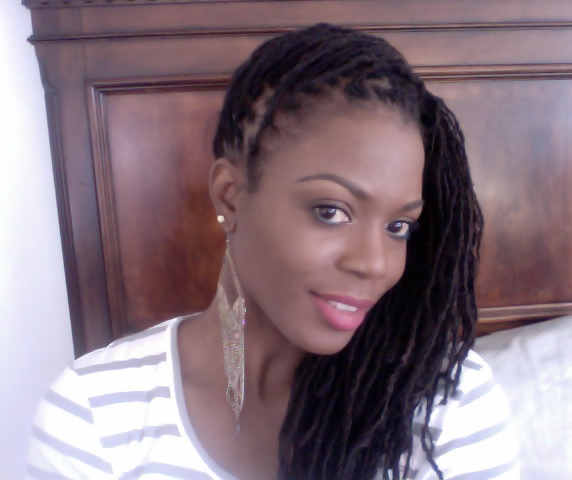Hello lovelies!
We have come to the end of the Going Back To Natural series. Every single day of this week has been dedicated to enlightening, encouraging and inspiring everyone considering reclaiming their kinks, going back to natural hair.
This has been an interesting week. We’ve looked at what hair is and how relaxers work, how to transition from relaxed to natural hair, creating a healthy hair regimen and choosing hair products. You can catch the entire series here.
I’m still here for you- always an email away thekinkandi@gmail.com, but as this series comes to a close, I thought I’d say some last words:
1. Start Now.
Whether you’re transitioning, or you’re happy remaining on #teamrelaxer, I want you to be on #teamGoodHair, because good hair is healthy hair. Your healthy hair journey starts now.
2. Be Ready.
Before you go, I’d love for you to be ready. Have a few basic products and tools that you’ll need. Also have an idea of what your regimen is going to be. So you don’t freak out after.
3. Natural hair does not equal healthy hair.
Being Natural is best for hair, but just because your hair is in its natural state doesn’t mean your work is done. You need to keep your hair happy and healthy with gentle appropriate TLC.

Aevin Dugas and her fro- the world’s biggest fro.
4. Going back to Natural doesn’t mean you’re on your way to a full head of Bohemian curls.
It doesn’t help that in the media when natural hair is represented, it’s all about loose curls and clumped spirals. These are beautiful, yes but the whole point of going back to natural is going back to YOUR natural. It may be really curly and it may not. And that’s great. Because that’s YOU. You leave relaxed hair to be free only to become a slave to the perfect curl definition- that’s not freedom, love. Be ready to embrace your hair, your curl pattern as it is.

Natasha of Mane Moves TV
5. There’s no hair genie in a bottle.
The (long) healthy hair you want is not in a bottle. The products will tell you what they want, and some of them may help but the real factors that affect your hair’s health are in your hands. Healthy hair practices make all the difference. Be ready to develop a regimen and the consistency to stick to it.
6. Your hair is primarily your responsibility.
If you’re a female like me living in Nigeria, chances are, you have no idea how to care for your own hair. You know how to brush and roll that Brazillian but I’m guessing you don’t know a lot about your own hair- relaxed, let alone kinky-curly. Fact is, most of our hair stylists know how to beautify our heads with extensions, but they know little or nothing about what our own hair actually needs. They don’t know how to deal with natural hair so guess what? You’re about to become your hair’s main stylist and caregiver. Don’t be scared, you can do this. As am I. And many many women around the world. If you have a stylist you can trust, please don’t turn your back on them now. With or without a stylist, you need to be in tune with your hair.

Loc’d hairspiration: Synethia!
7. Listen to your hair.
Sounds like crazy talk? I know. Your hair is unique, hair speaks. If it likes or hates a product, it will show it. You just need to pay attention. 😉
8. Please Study.
As you listen to your hair, you NEED to do a little bit of studying to be able to discern what it’s saying. Read blogs, subscribe to newsletters, join forums. There are tonnes of information available on the internet (Thank Goodness!) and amazing resources. The Natural Hair community is a very open one, people are very eager to swap hair stories and experiences.
9. Document your hairscapades!
It’s important that you document your experience, take a lot of photos! Keep a hair journal, start a blog! On your down days, you can look at old photos or old entries and see how far you’ve come. 🙂
10. Stay positive!
There’ll be days when you’ll hate your hair, days when you’re wondering what the point is, days you want to just rush back to the creamy crack. Stay positive, put your relaxer and texturiser out of sight- give them away, trash them! I had Hairspiration folders when I was transitioning. On my phone, on my computer- I became a fro spotter. I also had a board on Pinterest. On my lowest days, these people that don’t even know me gave me life.
On the blog, many naturalistas have shared their hair journeys and their hair pictures, very beautiful real life natural hair inspiration. Go meet them here. More hairspiration, you could check out these tumblrs- Le Coil, Klassy Kinks for starters- and on facebook, Natural Nigerian and the Kinky Apothecary.
You can do this. At your own time, on your own terms. You are beautiful, you can be fierce, you can own those kinky curls! 😉 And best believe that when you do wear your hair out, you are encouraging other people to do the same!
Nigerian curlies, if you need help finding hair products or a hair salon in Nigeria, this here could help.
Till next post,
Love,
AB
xx










![spot the demarcation points! [Source]](https://thekinkandi.files.wordpress.com/2013/10/newgrowth.jpg?w=640)








